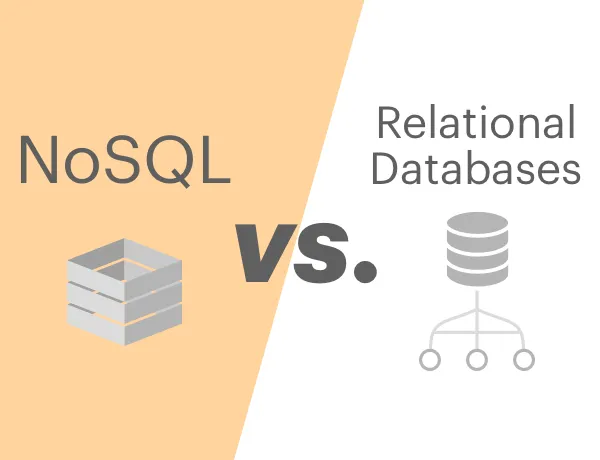Maintenance Tracking in Mechanical Databases
Maintenance tracking in mechanical databases is a critical aspect of ensuring the reliability and performance of mechanical systems. As mechanical equipment operates, it undergoes wear and tear, making regular maintenance essential to prevent breakdowns and extend the lifespan of components. Maintenance tracking in mechanical databases involves the systematic recording, monitoring, and analysis of maintenance activities to optimize scheduling, reduce downtime, and enhance overall operational efficiency.
Key Components of Maintenance Tracking in Mechanical Databases:
- Maintenance Records: The foundation of maintenance tracking lies in the detailed recording of maintenance activities. Each maintenance event is documented in the database, including information such as the date of maintenance, the components serviced, the type of maintenance performed, and the technicians involved. This historical record serves as a valuable resource for analyzing equipment performance and identifying patterns.
- Asset Information: Maintenance tracking is closely linked to specific assets within mechanical systems. Each asset, whether it’s a machine, component, or system, is associated with a unique identifier in the database. Asset information includes details such as the installation date, manufacturer, model, and specifications. This association allows for targeted maintenance planning and analysis.
- Fault Detection and Diagnostics: Maintenance tracking databases can integrate data from sensors and monitoring devices. Real-time data from these sources, when correlated with maintenance records, enables the detection of faults or deviations from normal operating conditions. Advanced analytics can provide insights into potential issues, allowing for proactive maintenance before a major failure occurs.
- Predictive Maintenance Models: Predictive maintenance, enabled by machine learning algorithms, is a key advancement in maintenance tracking. By analyzing historical data, these models can predict when equipment is likely to fail, allowing for scheduled maintenance interventions. This approach minimizes unplanned downtime, reduces maintenance costs, and optimizes the utilization of resources.
- Work Order Management: Maintenance tracking databases often include functionality for managing work orders. When maintenance tasks are identified, work orders are generated, specifying the nature of the task, required resources, and deadlines. This feature streamlines the workflow for maintenance teams, ensuring that tasks are executed efficiently and in a timely manner.
Benefits of Maintenance Tracking in Mechanical Databases:
- Reduced Downtime: Proactive maintenance, facilitated by effective tracking, helps reduce unplanned downtime. By addressing potential issues before they escalate, organizations can keep mechanical systems operational and minimize disruptions to production processes.
- Extended Equipment Lifespan: Regular maintenance, guided by tracking data, contributes to the longevity of mechanical equipment. Identifying and addressing wear and tear in a timely manner can prevent premature failure and extend the lifespan of critical components.
- Cost Savings: Efficient maintenance tracking leads to cost savings in multiple ways. By avoiding unexpected breakdowns, organizations reduce the need for emergency repairs, which can be costly. Additionally, predictive maintenance models help optimize the use of resources, ensuring that maintenance activities are performed when truly necessary.
- Improved Resource Allocation: Maintenance tracking provides valuable insights into the performance of different assets. This information aids in strategic resource allocation, allowing organizations to prioritize maintenance efforts based on the criticality and usage patterns of specific equipment.
- Enhanced Safety and Compliance: Regular maintenance is often a requirement for ensuring safety and compliance with industry regulations. Maintenance tracking helps organizations demonstrate a proactive approach to equipment safety, contributing to a safer working environment and adherence to regulatory standards.
- Data-Driven Decision-Making: Maintenance tracking databases generate a wealth of data that can be leveraged for informed decision-making. By analyzing trends and patterns in maintenance records, organizations can make data-driven decisions regarding equipment replacement, upgrades, or changes to maintenance schedules.
maintenance tracking in mechanical databases is a strategic approach to ensuring the optimal performance and longevity of mechanical systems. By leveraging detailed maintenance records, fault detection, predictive maintenance models, work order management, and other features, organizations can transition from reactive to proactive maintenance strategies. This not only reduces downtime and costs but also enhances the overall reliability and safety of mechanical equipment.
Preventive Maintenance Tracking Software
Preventive maintenance tracking software plays a pivotal role in optimizing maintenance strategies for mechanical equipment and systems. Preventive maintenance aims to address potential issues before they escalate into costly failures, and the software designed for this purpose facilitates the systematic planning, execution, and monitoring of scheduled maintenance activities. Here’s an exploration of the key features, benefits, and considerations associated with preventive maintenance tracking software.
Key Features of Preventive Maintenance Tracking Software:
- Scheduling and Planning: Preventive maintenance software allows users to schedule routine maintenance tasks based on predefined intervals, usage metrics, or other relevant factors. This feature ensures that maintenance activities are systematically planned, reducing the likelihood of unexpected breakdowns.
- Asset Management: The software maintains a comprehensive database of assets, capturing details such as installation dates, specifications, and maintenance history. This asset-centric approach enables users to track the performance of individual components and plan preventive maintenance activities accordingly.
- Work Order Generation: When preventive maintenance tasks are due, the software generates work orders. Work orders include details about the tasks to be performed, required resources, and deadlines. This feature streamlines the workflow for maintenance teams, ensuring that tasks are executed in a coordinated and timely manner.
- Checklists and Procedures: Preventive maintenance tracking software often includes customizable checklists and procedures for each type of maintenance task. This ensures that technicians follow standardized protocols during maintenance activities, promoting consistency and thoroughness.
- Documentation and History Tracking: The software maintains a detailed history of all preventive maintenance activities. This documentation serves as a valuable resource for analyzing equipment performance, identifying trends, and making informed decisions about future maintenance strategies.
- Integration with Sensors and IoT Devices: Many modern preventive maintenance solutions integrate with sensors and Internet of Things (IoT) devices. Real-time data from sensors can trigger preventive maintenance alerts based on actual equipment conditions, allowing for a more dynamic and adaptive maintenance approach.
- Reporting and Analytics: Robust reporting and analytics features provide insights into the effectiveness of preventive maintenance strategies. Users can generate reports on key performance indicators, track maintenance costs, and identify areas for improvement in the overall maintenance program.
Benefits of Preventive Maintenance Tracking Software:
- Reduced Downtime: By proactively addressing potential issues, preventive maintenance software helps reduce unplanned downtime. Scheduled maintenance activities are performed during planned maintenance windows, minimizing disruptions to operations.
- Increased Equipment Lifespan: Regular and timely preventive maintenance contributes to the extended lifespan of mechanical equipment. Addressing wear and tear before it leads to failure ensures that components operate within optimal parameters, preventing premature deterioration.
- Cost Savings: Preventive maintenance software helps organizations achieve cost savings by avoiding emergency repairs and reducing the overall cost of maintenance. By addressing issues proactively, organizations can optimize the use of resources and minimize the impact on production costs.
- Improved Safety and Compliance: Regular preventive maintenance is often a requirement for ensuring safety and compliance with industry regulations. Preventive maintenance software facilitates the documentation of maintenance activities, demonstrating a commitment to safety and regulatory compliance.
- Efficient Resource Allocation: With insights from preventive maintenance data, organizations can allocate resources more efficiently. This includes optimizing the scheduling of maintenance teams, managing spare parts inventory, and prioritizing maintenance tasks based on criticality.
- Enhanced Productivity: By minimizing downtime and ensuring the reliability of equipment, preventive maintenance contributes to enhanced overall productivity. Mechanical systems operate more consistently, leading to increased throughput and efficiency in production processes.
Considerations for Implementing Preventive Maintenance Tracking Software:
- Scalability: Choose software that can scale to accommodate the evolving needs of your organization. This is crucial as the number of assets and the complexity of maintenance tasks may change over time.
- Integration Capabilities: Ensure that the preventive maintenance software can seamlessly integrate with existing systems, such as enterprise resource planning (ERP) software, sensors, and other relevant tools. Integration enhances data accuracy and eliminates silos of information.
- User Training: Proper training for maintenance teams and users is essential for the successful implementation of preventive maintenance software. Ensure that users understand how to use the software effectively to maximize its benefits.
- Data Security: Consider the security measures implemented by the software to protect sensitive maintenance data. This includes access controls, encryption, and other security features to safeguard against unauthorized access.
- Flexibility and Customization: Look for software that offers flexibility and customization options. Organizations have unique maintenance requirements, and the software should be adaptable to specific workflows and processes.
Maintenance Log in Mechanical Systems
A maintenance log in mechanical systems serves as a comprehensive record of all maintenance activities conducted on various components, machinery, and systems within an organization. This log is a vital documentation tool that captures details such as maintenance dates, performed tasks, parts replaced, and the technicians involved. The purpose of maintaining such a log is to track the health and performance of mechanical assets, facilitate proactive maintenance planning, and ensure compliance with safety and regulatory standards.
Key Components of a Maintenance Log:
- Asset Identification: Each entry in the maintenance log is associated with a specific asset, such as a machine, equipment, or system. Asset identification includes details such as asset name, ID, and a description, providing a clear reference for maintenance activities.
- Date and Time Stamp: Recording the date and time of each maintenance event is crucial for establishing a chronological order of activities. This information aids in analyzing patterns, identifying trends, and planning future maintenance schedules.
- Maintenance Tasks and Descriptions: The log details the specific maintenance tasks performed during each event. This includes routine inspections, preventive maintenance tasks, repairs, and any other relevant activities. Descriptions provide clarity on the nature and scope of the work carried out.
- Technician Information: Maintenance logs typically include the names or identification codes of the technicians responsible for performing the maintenance tasks. This information contributes to accountability and allows for tracing the individuals involved in each maintenance event.
- Parts and Materials Used: For repairs or replacements, the maintenance log documents the parts, materials, and consumables used during the maintenance activity. This information aids in inventory management, ensuring that the necessary supplies are available for future maintenance tasks.
- Equipment Readings and Measurements: In cases where maintenance involves readings or measurements from sensors or monitoring devices, these values are recorded in the log. This data is valuable for assessing the performance of the equipment and detecting any deviations from normal operating conditions.
- Comments and Observations: Technicians often include comments and observations in the maintenance log. These notes provide additional context, insights into equipment conditions, and recommendations for future actions. Comments contribute to a holistic understanding of the maintenance history.
Benefits of Maintaining a Detailed Maintenance Log:
- Historical Analysis: A maintenance log serves as a historical record of all maintenance activities. Organizations can analyze this data to identify recurring issues, assess the effectiveness of maintenance strategies, and make informed decisions regarding equipment replacement or upgrades.
- Proactive Maintenance Planning: By reviewing the maintenance log, organizations can proactively plan future maintenance activities. Trends and patterns in the data help predict when specific components may require attention, allowing for scheduled maintenance and minimizing unplanned downtime.
- Regulatory Compliance: Maintenance logs are essential for demonstrating compliance with safety and regulatory standards. They provide a documented history of maintenance activities, which is often required for audits and inspections by regulatory authorities.
- Improved Troubleshooting: When issues arise, a detailed maintenance log can aid in troubleshooting. Technicians can refer to past entries to understand the maintenance history of the equipment, identify recurring problems, and implement more effective solutions.
- Enhanced Asset Management: Maintenance logs contribute to comprehensive asset management by providing insights into the performance and reliability of mechanical assets. This information is valuable for making decisions about asset replacement, upgrades, or modifications.
- Efficient Resource Allocation: By analyzing the maintenance log, organizations can allocate resources more efficiently. This includes optimizing the scheduling of maintenance teams, ensuring the availability of spare parts, and prioritizing tasks based on criticality and historical performance.
- Continuous Improvement: Regularly reviewing the maintenance log fosters a culture of continuous improvement. Organizations can identify areas for enhancement in maintenance processes, training programs, or equipment reliability, leading to increased efficiency and cost savings.
In summary, a maintenance log in mechanical systems is a comprehensive and indispensable tool for organizations seeking to optimize maintenance practices. It serves as a historical record, aids in proactive planning, ensures regulatory compliance, improves troubleshooting efforts, enhances asset management, facilitates efficient resource allocation, and promotes a culture of continuous improvement. The meticulous maintenance of such logs is fundamental to the overall reliability and performance of mechanical systems.
Asset Tracking and Maintenance in Databases
Asset tracking and maintenance in databases involve the systematic organization and management of information related to mechanical assets within an organization. This process leverages database systems to record, monitor, and analyze data associated with assets, facilitating effective maintenance planning, resource allocation, and overall asset management. Here, we explore the key components, benefits, and considerations associated with asset tracking and maintenance in databases.
Key Components of Asset Tracking and Maintenance in Databases:
- Asset Identification: Each asset is assigned a unique identifier within the database. This identifier facilitates the tracking of individual assets and ensures accurate associations with maintenance records, usage data, and other relevant information.
- Asset Details: Asset details include comprehensive information about each asset, such as its name, description, specifications, installation date, manufacturer, model, and location. This information provides a detailed profile of each asset, aiding in maintenance planning and decision-making.
- Maintenance History: The database maintains a history of all maintenance activities associated with each asset. This includes details such as maintenance dates, performed tasks, parts replaced, and technicians involved. Access to maintenance history is crucial for analyzing the performance and reliability of assets over time.
- Usage Metrics: Tracking usage metrics, such as operating hours, cycles, or production outputs, provides insights into the utilization patterns of assets. This data aids in predicting maintenance needs, optimizing preventive maintenance schedules, and assessing the overall efficiency of assets.
- Sensor and IoT Integration: Many modern databases for asset tracking and maintenance integrate with sensors and Internet of Things (IoT) devices. Real-time data from these sources, such as temperature, pressure, or vibration readings, enhances asset monitoring and enables proactive maintenance based on actual equipment conditions.
- Work Order Management: Work orders generated within the database streamline the workflow for maintenance teams. These work orders specify the maintenance tasks to be performed, required resources, and deadlines. Work order management ensures that maintenance activities are executed efficiently and in a coordinated manner.
- Integration with Other Systems: Asset tracking and maintenance databases often integrate with other systems within an organization, such as Enterprise Resource Planning (ERP) systems or financial systems. This integration ensures consistency across different departments and enhances data accuracy.
Benefits of Asset Tracking and Maintenance in Databases:
- Optimized Maintenance Planning: Access to comprehensive asset data within a database allows organizations to optimize maintenance planning. By analyzing maintenance history, usage metrics, and other relevant information, maintenance teams can schedule tasks more efficiently and proactively address potential issues.
- Extended Asset Lifespan: A systematic approach to asset tracking and maintenance contributes to the extended lifespan of mechanical assets. Timely maintenance interventions, based on usage metrics and historical data, prevent premature failure and ensure that assets operate within optimal parameters.
- Improved Resource Allocation: Efficient resource allocation is facilitated by insights from the database. Organizations can allocate maintenance teams, spare parts, and other resources based on the criticality and usage patterns of specific assets, minimizing downtime and maximizing productivity.
- Enhanced Asset Performance: Asset tracking and maintenance databases enable organizations to monitor the performance of assets in real-time. Integration with sensors and IoT devices allows for immediate detection of deviations from normal operating conditions, facilitating prompt maintenance interventions.
- Cost Savings: By optimizing maintenance schedules, reducing unplanned downtime, and extending asset lifespans, organizations achieve cost savings. Proactive maintenance strategies, guided by database insights, minimize emergency repairs and contribute to overall operational efficiency.
Considerations for Implementing Asset Tracking and Maintenance Databases:
- Scalability: Choose a database solution that can scale to accommodate the growing number of assets and the evolving needs of the organization. Scalability is crucial as the complexity of asset management may increase over time.
- User Training: Proper training for users, including maintenance teams and administrators, is essential for successful database implementation. Ensure that users understand how to input and retrieve data effectively to maximize the benefits of the database.
- Data Security: Implement robust security measures to protect sensitive asset and maintenance data. Access controls, encryption, and other security features are vital for safeguarding information from unauthorized access or tampering.
- Integration Capabilities: Consider the integration capabilities of the database solution. Integration with other systems, such as ERP or financial systems, ensures data consistency and avoids duplication of efforts across different departments.
- Flexibility and Customization: Look for a database solution that offers flexibility and customization options. Organizations have unique asset tracking and maintenance requirements, and the database should be adaptable to specific workflows and processes.
asset tracking and maintenance in databases are integral components of effective asset management in organizations with mechanical systems. These processes leverage database systems to organize and analyze data related to assets, providing insights for optimized maintenance planning, extended asset lifespans, improved resource allocation, enhanced asset performance, and cost savings. Careful consideration of scalability, user training, data security, integration capabilities, and flexibility is essential for the successful implementation and utilization of asset tracking and maintenance databases.
CMMS (Computerized Maintenance Management System) for Mechanical Applications
A Computerized Maintenance Management System (CMMS) tailored for mechanical applications is a specialized software solution designed to streamline and enhance the management of maintenance activities related to mechanical systems, components, and equipment within an organization. CMMS integrates technology, data, and processes to facilitate efficient maintenance planning, scheduling, execution, and documentation. Here, we explore the key features, benefits, and considerations associated with implementing CMMS in the context of mechanical applications.
Key Features of CMMS for Mechanical Applications:
- Asset Management: CMMS maintains a comprehensive database of mechanical assets, including detailed information such as specifications, installation dates, maintenance history, and usage metrics. This asset-centric approach enables organizations to track the performance of individual mechanical components and plan maintenance activities accordingly.
- Work Order Management: Work order management is a central feature of CMMS. It involves the generation, assignment, and tracking of work orders for maintenance tasks. CMMS allows users to create work orders, specify tasks to be performed, allocate resources, and monitor the progress of maintenance activities.
- Preventive Maintenance Scheduling: CMMS facilitates the scheduling of preventive maintenance tasks based on predefined intervals, usage metrics, or other relevant factors. Preventive maintenance scheduling ensures that routine inspections and maintenance activities are systematically planned, reducing the risk of unexpected breakdowns.
- Inventory Management: CMMS includes features for managing spare parts and inventory related to mechanical systems. This includes tracking the availability of parts, managing stock levels, and generating alerts when inventory needs replenishment. Efficient inventory management contributes to timely maintenance task execution.
- Document Management: The system allows for the storage and management of documents related to maintenance activities. This may include equipment manuals, maintenance procedures, safety guidelines, and other relevant documentation. Document management ensures that technicians have access to essential information during maintenance tasks.
- Mobile Accessibility: Many modern CMMS solutions offer mobile accessibility, allowing maintenance teams to access the system from mobile devices in the field. Mobile access enhances real-time communication, enables technicians to update work orders on the go, and contributes to the efficiency of maintenance operations.
- Integration with Sensors and IoT Devices: CMMS can integrate with sensors and Internet of Things (IoT) devices to capture real-time data from mechanical systems. Integration with sensors enhances the ability to monitor equipment conditions, detect faults, and trigger maintenance alerts based on actual performance data.
Benefits of CMMS for Mechanical Applications:
- Increased Equipment Reliability: CMMS contributes to increased reliability of mechanical equipment by facilitating preventive maintenance scheduling. Regular inspections and proactive maintenance interventions minimize the risk of unexpected breakdowns, ensuring continuous equipment operation.
- Optimized Maintenance Planning: The systematic planning features of CMMS, including work order management and preventive maintenance scheduling, optimize maintenance planning. Organizations can schedule tasks more efficiently, allocate resources based on priorities, and minimize downtime.
- Extended Equipment Lifespan: Proactive maintenance, guided by CMMS data, contributes to the extended lifespan of mechanical equipment. Timely interventions, replacement of worn parts, and adherence to preventive maintenance schedules ensure that equipment operates within optimal parameters.
- Improved Resource Allocation: CMMS provides insights into asset performance and maintenance requirements, allowing organizations to allocate resources more efficiently. This includes optimizing the scheduling of maintenance teams, managing spare parts inventory, and prioritizing tasks based on criticality.
- Enhanced Documentation and Compliance: CMMS facilitates the storage and management of documentation related to maintenance activities. This contributes to compliance with safety and regulatory standards by ensuring that technicians have access to essential information during maintenance tasks.
- Efficient Work Order Execution: Work order management features in CMMS streamline the workflow for maintenance teams. Technicians can receive, update, and complete work orders efficiently, contributing to the overall effectiveness and responsiveness of maintenance operations.
Considerations for Implementing CMMS in Mechanical Applications:
- User Training: Adequate training for users, including maintenance teams and administrators, is crucial for successful CMMS implementation. Users should be familiar with the functionalities of the system to maximize its benefits.
- Integration with Existing Systems: Ensure that the selected CMMS solution integrates seamlessly with existing systems within the organization. Integration with Enterprise Resource Planning (ERP) systems, financial systems, and other relevant tools enhances data consistency and eliminates silos of information.
- Scalability: Choose a CMMS solution that can scale to accommodate the growing number of assets and maintenance activities. Scalability is essential as the complexity of maintenance management may increase over time.
- Data Security: Implement robust security measures to protect sensitive asset and maintenance data stored in the CMMS. Access controls, encryption, and other security features are vital for safeguarding information from unauthorized access or tampering.
- Customization and Flexibility: Look for a CMMS solution that offers customization options to adapt to the unique workflows and processes of mechanical applications. Flexibility in configuring the system ensures that it aligns with specific organizational requirements.
implementing a CMMS tailored for mechanical applications is a strategic approach to optimizing maintenance management. The system’s features, including asset management, work order management, preventive maintenance scheduling, and mobile accessibility, contribute to increased equipment reliability, extended equipment lifespan, improved resource allocation, and enhanced compliance.
preventive maintenance tracking software is a powerful tool for organizations seeking to transition from reactive to proactive maintenance strategies. By leveraging features such as scheduling, asset management, work order generation, and analytics, organizations can optimize maintenance efforts, reduce downtime, and extend the lifespan of mechanical equipment. The successful implementation of preventive maintenance software contributes to overall operational efficiency and cost-effectiveness in the management of mechanical systems.







